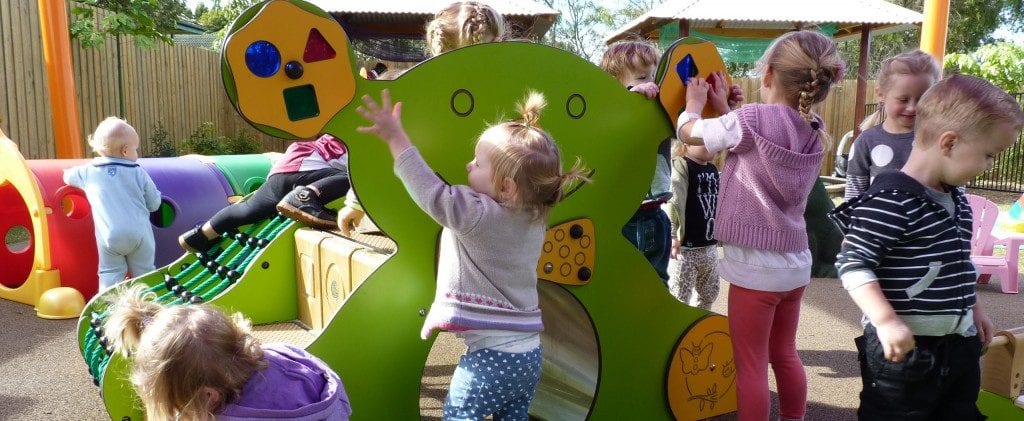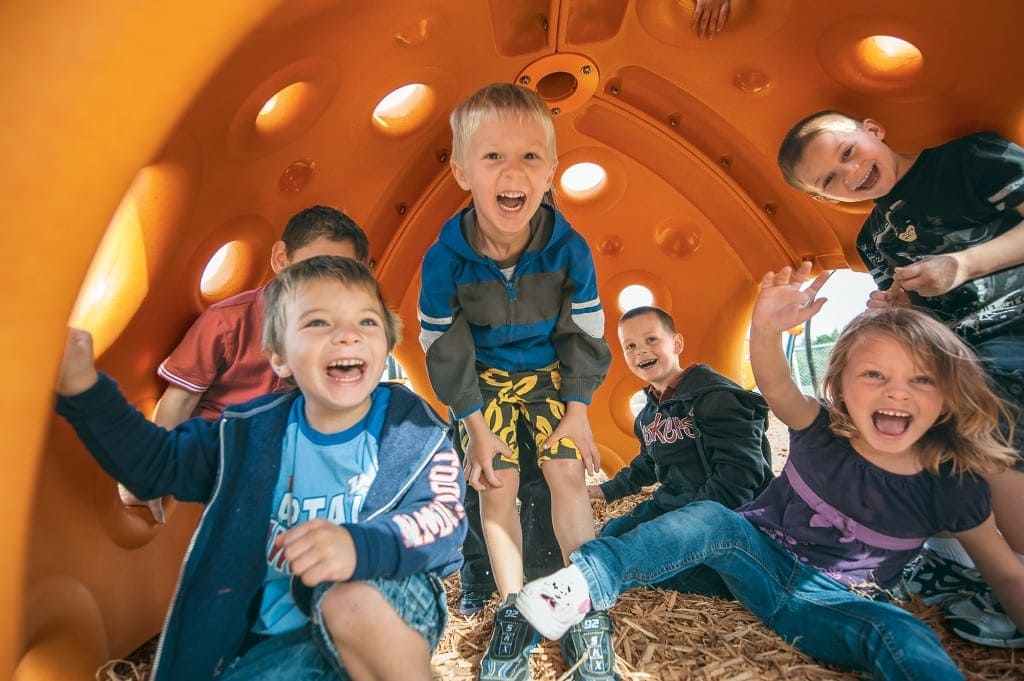We are constantly learning so much about the positive effects of play in our early developmental years. Unstructured and free play allows children to do what comes naturally to them – make up their own games, develop their own rules, explore the world with gusto. Developing physical skills, learning cooperative play and growing their creativity – PLAY IS VITAL in a child’s development. Skills developed in physical education in the early years are just as important for success later in life as intellectual development, although the value of a well-designed playspace is so often put second.
The Value of Play – Getting the balance right
“Imaginative play needs to be protected from the threat of tight schedules, the early take up of TV, DVD’s and computer games… an intense focus on early achievement and a lack of opportunity to take chances and learn limits” Dr Caunt – Child and Adolescent Health Service
Children are spending an increased amount of time in childcare settings with little other exposure to play time outdoors. Children and Nature Network’s Robyn Bjorrnson backs these truths and believes children need to engage in outdoor play to hone in on creativity and their individuality.
“Children who regularly experience nature play are healthier, happier, and test better in school. Studies indicate that direct exposure to nature can relieve the symptoms of attention-deficit disorders, improve resistance to stress and depression, increase self-esteem, stimulate cognitive development and creativity, as well as reduce myopia and lower child obesity.”
Whether on an innovative play structure or in the garden, children playing outside are more apt to stretch their imaginations, along with their muscles, playing more freely as they leap from one adventure to another. Interactive and sensory experiences in the playground need to be designed specifically to cater for the varying developmental stages of the junior years, offering a platform for children to grow, learn and have fun in a healthy environment.
Play becomes an integrating mechanism that allows children to apply their learning into body management, cause and effect, risk taking and learning to do things for themselves, exploring and challenging their boundaries along the way.
In a well-considered playspace, curious minds are invited through PLAY to develop their skills in six key areas: physical, cognitive, sensory/motor, emotional/social and language. Equipment incorporated into early learning childcare environments should provide a stimulating diversity to nurture development and exploration in these key areas.
Well-designed playgrounds encourage young children to become independent, inquisitive learners, gain confidence in their physical skills and form positive relationships with their peers. Imaginative playscape designs offer age-appropriate challenges that help children build physical strength, flexibility, balance and dexterity – achieved alongside a sense of wonderment.

Successful design involves consideration of a number of critically linked elements:
Integration
– Maximising the integration of play opportunities for children of all abilities – each child learns and develops at their own rate with their own needs. Consideration given to a play environment’s suitability within “ability demographics” provides greater usability, especially tailoring to particular special needs.
Social
– When children play together, they encourage each other to develop in ways that they couldn’t do alone. Social play lets children – of the same or varying abilities – integrate previous sensory knowledge with new experiences to expand their understanding of the world.
Tactile
– Children touch everything because it’s the most dependable sensory system. It’s also the first to develop and the longest to stay in our lives. Tactile input received from play experiences helps the brain organise information for developing visual and auditory systems and help the nervous system organise all the sensory information from the environment.
Proprioceptive – Body Position/Muscle Sense
– Proprioceptive receptors are found in muscles, tendons and joints. When a child moves, these receptors tell their brain about body position and how much force is needed for an activity. The playground should have a wide variety of experiences that allow children to use their muscles in different combinations.
Vestibular – Balance / Movement
– Vestibular receptors are in the inner ear and tell the child how their body moves through space and against gravity. This input is important for developing proper balance, posture and protecting the body against gravity. The playground should provide opportunities for children to move through space, allowing them to experience gravity in a variety of positions and speeds.
Visual
– We depend on sight the most. Colours, visual patterns and light reflection need to be considered within the playground design to provide a variety of visual experiences for children of all abilities.
Auditory
– Children often hear a broad range of sounds that can enhance or hinder their play experiences. The design of a playground should provide for a variety of sound opportunities for children.
Motor Planning
– Motor Planning involves the thinking of the steps it takes to complete an activity, then implementing the plan. For instance, children have to plan where their feet and hands go while climbing and then do it to move higher.
Imaginative
– Imaginative Play is the ability to create new worlds through playful interaction, as children turn make-believe ideas into real world experiences. A playground that supports sensory exploration allows all children to have this powerful make-believe play experience.
Cognitive
– Learning by doing – Cause and effect challenges, educational topics, names, shapes, measurements and colours are all part of the cognitive influence on the playground.
Specialising in the design and construction of holistic play environments, puts smiles on children’s faces by building better playgrounds that meet and exceed all SAFETY STANDARDS and engage all seven senses through our unique sensory design methodology.
Providing stimulating, well designed playspaces that keep young minds and bodies active, safe and healthy – it’s just what we do!
This article was published in Issue 18 of our print magazine, October/November 2016.

